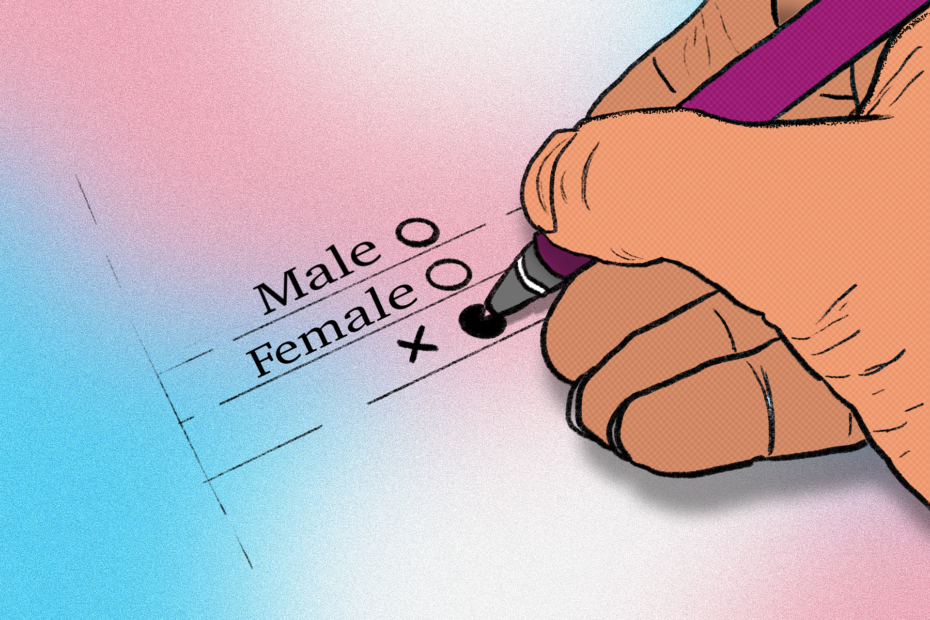On June 7, the National Assembly of Quebec passed Bill 2, which allows Quebec residents to change their sex designation to “X” on official government identification documents. This comes after months of controversy and discussion surrounding the Bill, especially in regards to its initial draft, which was first introduced by Minister of Justice Simon Jolin-Barrette in October of 2021. The initial drafting of the bill was alarming to many individuals who would be affected by the proposed legislation for a few reasons, particularly due to its reliance on gender-affirming surgery. The first drafting of the bill required individuals to undergo gender-affirming surgery in order to change their sex designation. Otherwise, gender and sex would be listed as separate categories. As was pointed out by activists, this requirement would force individuals to come out, potentially impacting their safety.
This initial draft had “many aspects that would have set trans rights back a decade,” Andrea Clegg, Equity Education Advisor, Gender Equity and 2SLGBTQ+ Education at McGill, said in an interview with the Daily. Six months after the bill was proposed, Minister Simon Jolin-Barrette eventually backed-down and modified the bill to drop such requirements after outrage from the queer community. The passing of the modified Bill, Clegg said, represents a “smashing of the gender binary” as it recognizes that “trans, intersex, nonbinary, [and] gender non-conforming members of our society [didn’t] fit within the way the government was categorizing people according to gender.”
To reflect the passing of Bill 2, as of September 1, McGill students are able to select X as their legal gender marker within McGill’s Student Information System. Andrea Clegg calls McGill’s decision “a first step towards inclusion” as it will mean that applicants and students will be able to “navigate through various systems in a way where their actual identities and their legal identities are reflected in how they’re captured in various systems.”
According to Madeleine Elise Nadler, Business Analyst Equity, Diversity, and Inclusion at Enrollment Services, McGill’s decision marks McGill as a “leader in terms of 2SLGBTQ+ equity, diversity, and inclusion”. McGill is “not only the first [university] in Quebec, but […] one of the first [universities] in Canada among the U15” to add X as a gender marker.”
Concordia University, in contrast, has opted to remove gender markings entirely in lieu of Bill 2, whereas the University of Toronto currently only has a neither option in addition to the standard male and female options. The University of British Columbia, on the other hand, currently has no non-binary options — only the binary options of male and female.
Nadler points out that this decision will help to alleviate bureaucratic barriers that individuals who do not identify within the gender binary often face, as it will make it easier for them to access documents in which their legal identity and lived identity are aligned. For “students […] trying to get recommendation letters for a job or apply to other universities [this decision] helps a lot with removing these barriers and having easier navigation with these systems,” says Nadler.
Brooklyn Frizzle, the Administrative Coordinator of Queer McGill, wrote in an email to the Daily that although this move was “undeniably a step in the right direction”, they wonder why the university waited to make this decision until there was a legal requirement to do so. “What was stopping the University from using X gender markers, at least internally, as other institutions and even governments, have been doing for years?” they questioned.
Frizzle also points to the University’s track record with preferred name usage. According to the SSMU’s Preferred Names Use Report, “59% of respondents who attempted to register a preferred name or a legal change of name with Student Records were unsuccessful,” and only 13.9% of respondents had their correct name on all IT services. Students who wish to change their gender designation to X will have to go through a similar process.
Frizzle concludes that McGill’s “reluctance to be ‘progressive’ until it becomes palatable”, their “hesitance to act until after the dust has already settled”, and the university’s track record with preferred names, marks McGill’s decision as “another bare-minimum, performative publicity stunt, re-branded as transformative change.” They write that if McGill “intends to present itself as a cutting edge, forward-looking institution, it must be prepared to set trends — not wait to follow them.”
In order for McGill students to change their gender marker to X, they are required to email a completed Personal Data Change Form with an accepted legal document—a list of which can be found on the eCalendar under Legal Name—to legaldocumentation@mcgill.ca.

